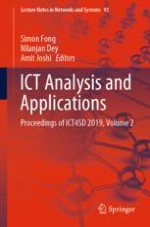2020 | OriginalPaper | Buchkapitel
Prediction of Sedimentation in an Arid Watershed Using BPNN and ANFIS
verfasst von : Sandeep Samantaray, Abinash Sahoo, Dillip K. Ghose
Erschienen in: ICT Analysis and Applications
Verlag: Springer Singapore
Aktivieren Sie unsere intelligente Suche, um passende Fachinhalte oder Patente zu finden.
Wählen Sie Textabschnitte aus um mit Künstlicher Intelligenz passenden Patente zu finden. powered by
Markieren Sie Textabschnitte, um KI-gestützt weitere passende Inhalte zu finden. powered by
